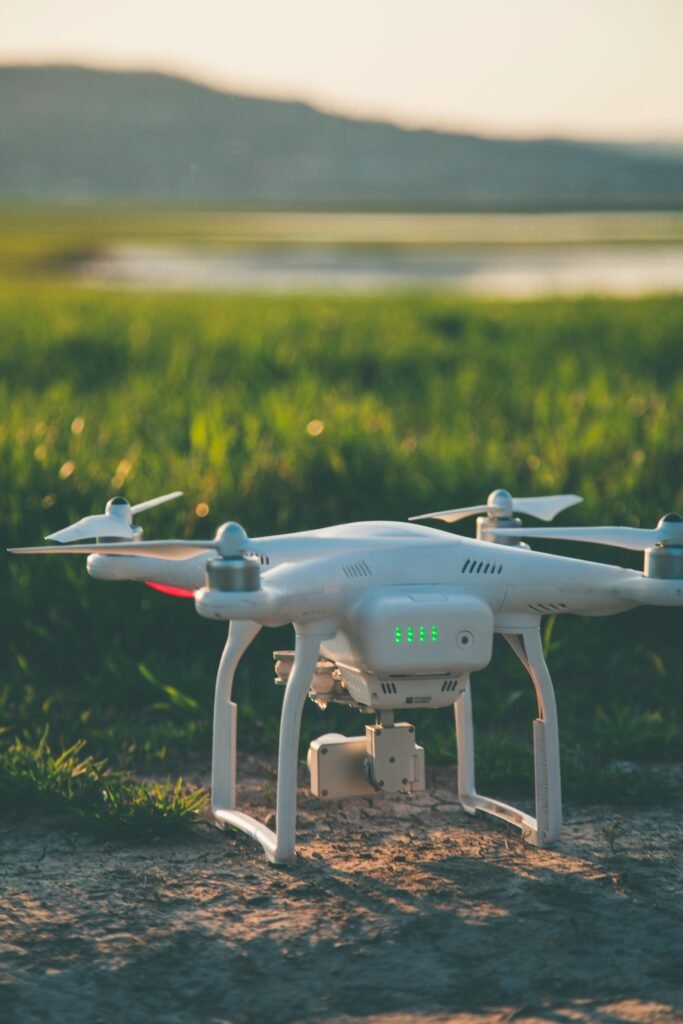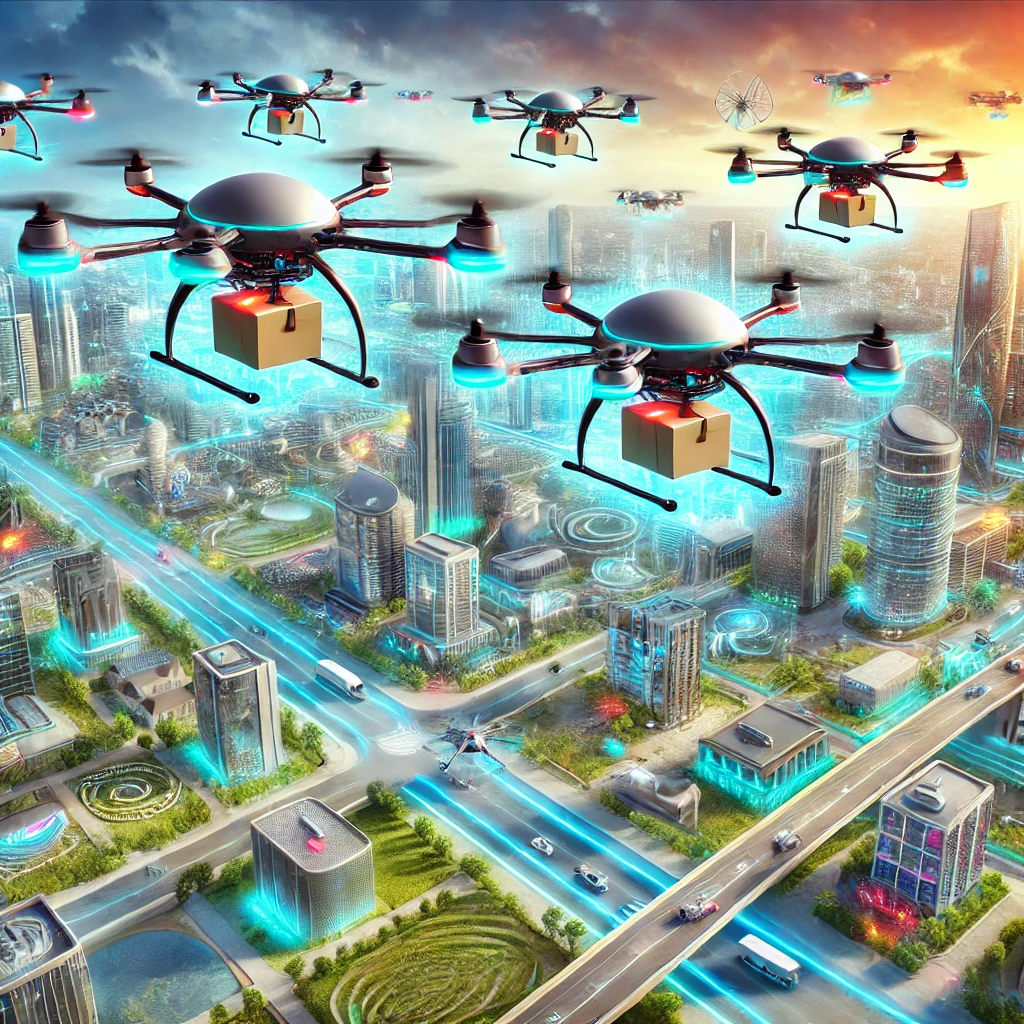Advancements in Drone Technology: Transforming the Future of Innovation
Advancement in Drone Technology
Introduction
Drones, also known as Unmanned Aerial Vehicles (UAVs), have come a long way from being niche gadgets to becoming essential tools across industries. With advancements in drone technology, these flying marvels are revolutionizing sectors such as logistics, agriculture, surveillance, and entertainment. This blog dives into the latest developments in drone technology, exploring how they are shaping our world and unlocking new opportunities for businesses and consumers alike.
1. Smarter Drones with AI and Machine Learning
Artificial intelligence (AI) and machine learning are transforming drones into intelligent systems capable of decision-making, obstacle avoidance, and real-time data processing. AI-powered drones can autonomously analyze environments, track objects, and adapt to dynamic conditions. These capabilities are being used in:
Search and Rescue Missions: Detecting survivors in disaster zones.
Surveillance: Monitoring large areas efficiently for security purposes.
Wildlife Conservation: Tracking endangered species and detecting poachers

2. Longer Flight Times and Enhanced Battery Technology
Battery life has always been a limiting factor for drones. However, advancements in battery technology, such as lithium-sulfur and solid-state batteries, are significantly increasing flight times. Solar-powered drones are also gaining traction, enabling:
Continuous Aerial Monitoring: For agriculture, border security, and weather observation.
Extended Delivery Services: Covering wider areas without frequent recharging.
3. Integration with 5G Networks
The integration of 5G technology into drones is a game-changer. Faster data transfer speeds and low latency allow drones to:
Stream High-Definition Video: In real-time for media production or surveillance.
Enable Precise Control: For industries like construction and logistics.
Support Swarm Technology: Coordinating multiple drones for complex tasks like reforestation or disaster relief.
4. Drones in Logistics and Delivery Services
The logistics industry is leveraging drone technology to revolutionize last-mile delivery. Companies like Amazon, UPS, and DHL are deploying drones for:
Fast and Cost-Effective Deliveries: Reducing delivery times for e-commerce packages.
Accessing Remote Areas: Providing essential supplies to hard-to-reach regions.
Eco-Friendly Solutions: Reducing carbon emissions compared to traditional vehicles.

5. Agricultural Revolution with Drone Technology
Drones are transforming agriculture by making farming more efficient and sustainable. Equipped with advanced sensors and cameras, agricultural drones are used for
Crop Monitoring: Detecting diseases, pests, and irrigation issues.
Precision Spraying: Applying fertilizers and pesticides with pinpoint accuracy.
Yield Optimization: Collecting data to maximize crop output and reduce waste.
6. Advanced Sensors for Specialized Applications
Modern drones come with advanced sensors, including LiDAR, thermal imaging, and multispectral cameras. These sensors enable:
Mapping and Surveying: Creating 3D maps for construction and urban planning.
Inspection: Monitoring infrastructure like power lines, bridges, and pipelines.
Environmental Research: Measuring pollution levels and assessing climate impact.
7. Enhanced Safety Features
Drone manufacturers are prioritizing safety with innovations such as:
Collision Avoidance Systems: Using sensors and AI to prevent accidents.
Geofencing Technology: Restricting drones from entering no-fly zones.
Failsafe Mechanisms: Ensuring safe landings during emergencies like battery failures.
8. Regulatory Progress and Urban Air Mobility
Governments worldwide are developing frameworks to regulate drone operations, opening doors to urban air mobility (UAM). Key advancements include:
Drone Traffic Management Systems: To prevent airspace congestion.
Passenger Drones: Exploring autonomous air taxis for urban transportation.
Commercial Drone Corridors: Dedicated routes for drone deliveries.

The Future of Drone Technology
As drone technology continues to advance, its applications will only expand further. From transforming industries to creating new ones, drones are set to play a pivotal role in shaping the future. With ongoing innovations in AI, battery life, and connectivity, we can expect drones to become smarter, more efficient, and more accessible.
Businesses, governments, and individuals alike must embrace these advancements to stay ahead in an increasingly tech-driven world. Whether it’s delivering packages, monitoring crops, or aiding in disaster recovery, drones are truly flying us toward a brighter, more connected future.
Conclusion
The advancements in drone technology are reshaping industries and redefining how we approach daily challenges. From delivering packages and revolutionizing agriculture to ensuring public safety and enabling urban air mobility, drones have become indispensable tools in our tech-driven world. These innovations, powered by AI, 5G, and cutting-edge sensors, are paving the way for a future where efficiency, sustainability, and connectivity are at the forefront.
As drones continue to evolve, their potential seems limitless. Governments, businesses, and individuals must embrace these changes and invest in this transformative technology to remain competitive and sustainable. The integration of drones into our lives is not just a glimpse of the future—it’s a reality that is soaring into the present.
